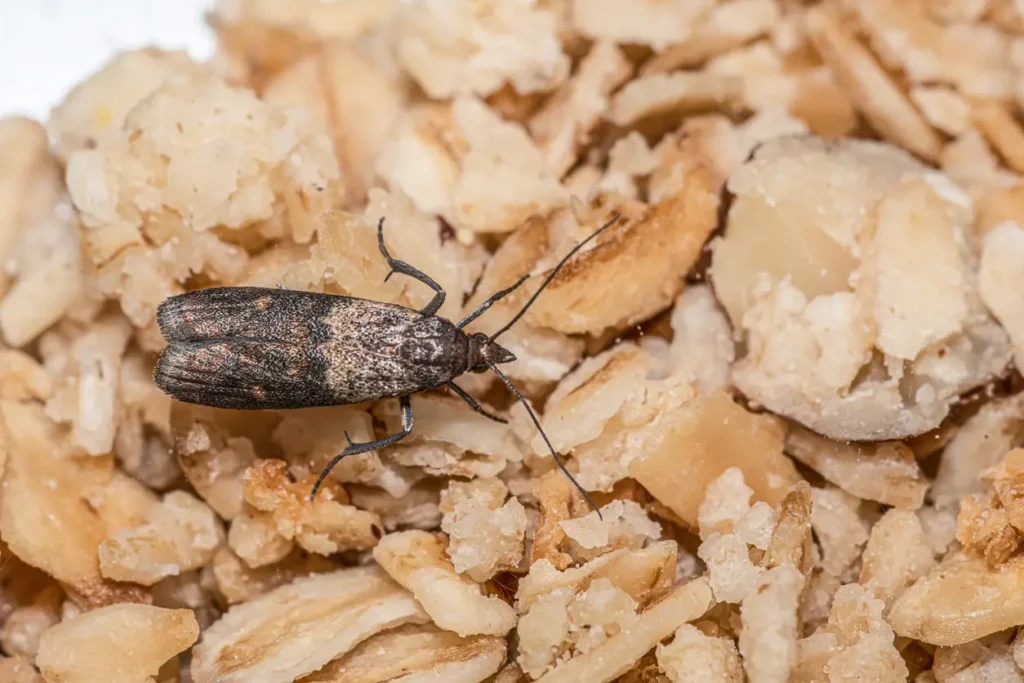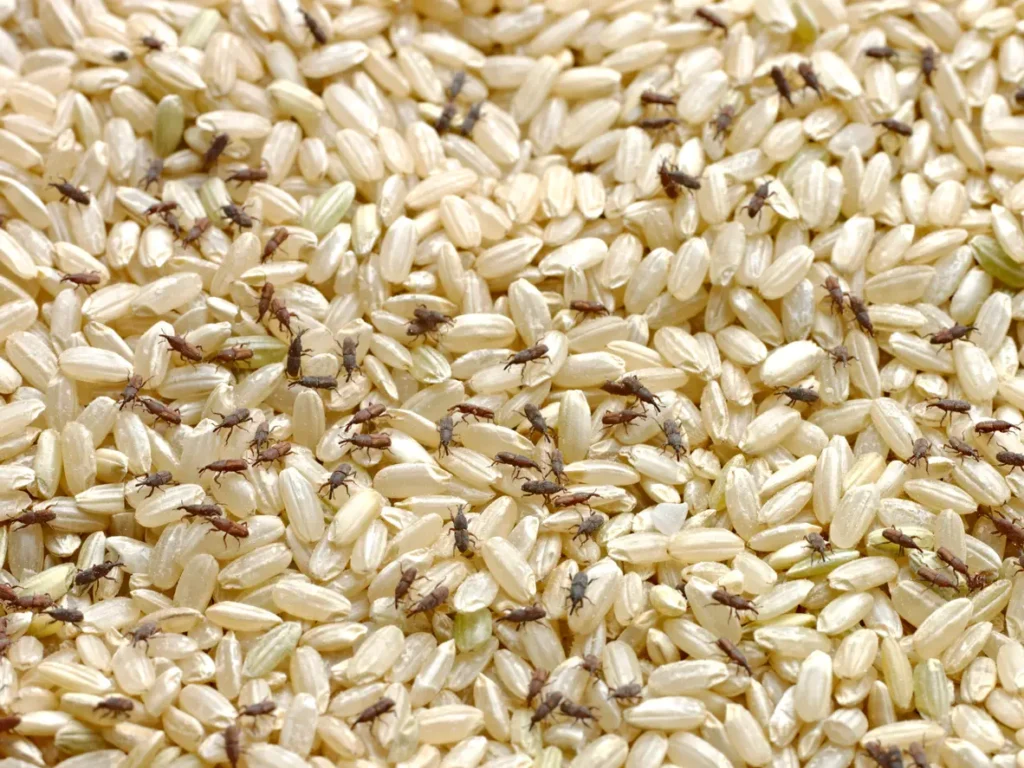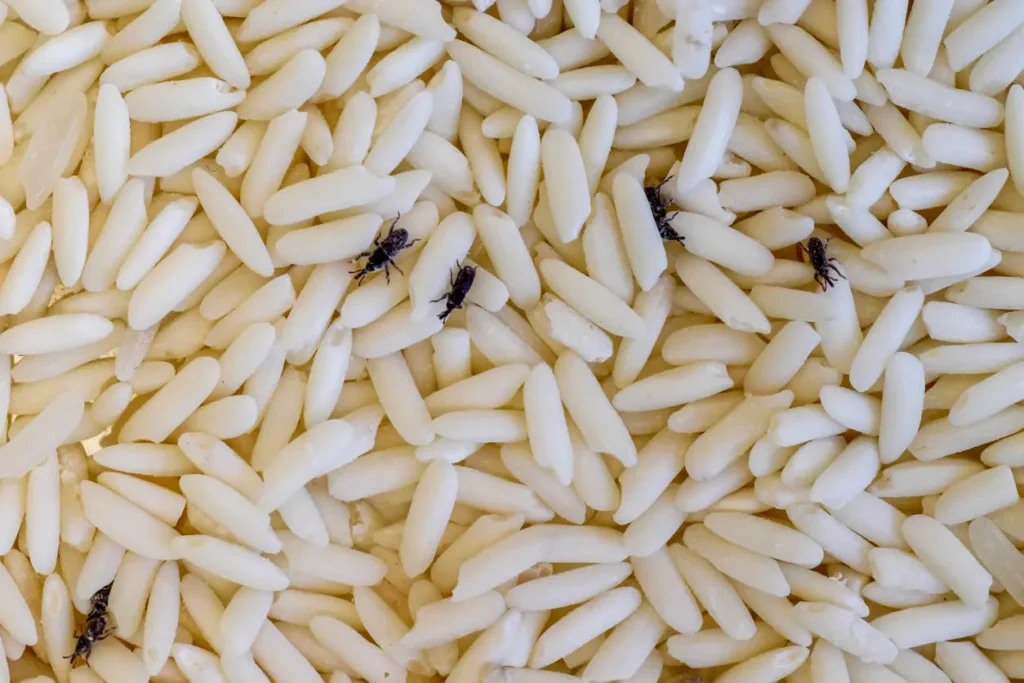
Pantry Pest Control in Lowcountry, SC
Finding bugs in your cereal, flour, or baking supplies is more than just a nuisance—it’s a frustrating waste of money and can throw off family meal prep in an instant. In the Lowcountry of South Carolina, our warm, humid climate creates the perfect breeding ground for pantry pests. Whether you live in a waterfront home along the Stono River, a family neighborhood in Goose Creek, a cottage in Beaufort, or a modern home near Bluffton or Hilton Head, residents across the Lowcountry face the same challenge: a moth fluttering around the pantry light, pin-sized beetles crawling near stored grains, or mysterious webbing tucked inside sealed packages. Left unchecked, these small intruders multiply rapidly, contaminating food supplies and creating a bigger headache for households who just want a clean, safe kitchen.
All U Need Pest Control delivers pantry pest control in Lowcountry, SC that’s smart, discreet, and tailored to our coastal lifestyle. We inspect, identify, eliminate, and prevent—giving you clear prep instructions and a follow-up plan that keeps your pantry clean and your groceries safe. Call 1-888-239-BUGS (1-888-239-2847) today for your free inspection and a solution designed specifically for your Lowcountry home.
Pest Control Services in Lowcountry, SC

How To Get Rid of Pantry Pests in Lowcountry, SC
Throwing away one box of infested cereal might feel like the solution, but it’s only the first step. Pantry pests—like moths, beetles, and weevils—lay dozens of eggs in or around dry goods. Those eggs and larvae can quickly spread to nearby packages on the same shelf. And with the Lowcountry’s year-round humidity, development cycles move quickly. That means half-measures only delay the problem.
A Lowcountry-smart approach looks like this:
- Isolate and audit. Bag anything suspicious; then carefully inspect all pantry staples—flour, cereal, rice, pasta, baking mixes, dried fruit, nuts, spices, pet food, and bird seed.
- Purge strategically. Toss any product that shows live insects, clumping, webbing, odd smells, or pin-sized holes in packaging. When in doubt, throw it out—better to lose one bag than an entire pantry.
- Deep-clean the shell. Empty cabinets completely. Vacuum corners, seams, and shelf pins. Scrub surfaces with hot, soapy water, and wipe dry. Pay attention to hidden zones like toe-kicks or the gap between your oven and the counter.
- Break the life cycle. Professional pest strategies like insect growth regulators (IGRs) stop eggs and larvae from maturing. This is especially important in humid Lowcountry kitchens where pests thrive during summer storm cycles.
- Re-package smart. Transfer safe, uncontaminated products into airtight glass jars or thick plastic containers with gasketed lids. This not only blocks pests from spreading but also protects against moisture, which is common in coastal homes.
Because pantry pests often arrive hidden inside sealed packages from grocery stores or farmers markets, even the most careful shoppers can get caught off guard. The difference between a minor inconvenience and a full-blown infestation comes down to how quickly and thoroughly you act.

Pantry Pest Treatment in Lowcountry, SC
Our program blends Integrated Pest Management (IPM) with careful product use and precise placement that respects kitchens, families, and pets—while also standing strong against the Lowcountry’s damp, humid conditions.
- Inspection & Identification. We determine whether you’re dealing with moths, beetles, or weevils, how widespread the problem is, and whether it has spread to secondary storage like utility rooms or garages. We also review storage habits—open pet food bags and backyard bird seed are common sources in the Lowcountry.
- Interior Flush-Out. Our low-odor treatments target cracks, crevices, and voids rather than food-contact areas. We also use pheromone monitors to intercept adults and track activity for follow-up visits.
- Structural & Sanitation Corrections. We recommend simple but effective improvements—like switching to sealed containers, sealing gaps at the backs of cabinets, replacing shelf liners, and improving airflow in damp cupboards, especially in raised Lowcountry homes where humidity lingers.
- Follow-Up & Verification. We return within a short window to confirm that pest populations have collapsed, refresh monitors, and address any hotspots before another generation can mature.
Along with treatment, you’ll receive easy-to-follow prep instructions: what to bag, what to clean, and what to save. Our goal is to restore order without disrupting your family’s entire kitchen routine.

Signs of a Pantry Pest Infestation in Lowcountry, SC
Spotting an infestation early saves groceries and prevents bigger issues. Look out for these common signs:
- Moths flying near lights at dusk. Adults often appear in kitchens or around pantries after larvae have matured inside stored goods.
- Silky webbing or clumps in flour, cereal, nuts, or dried fruit—sometimes with fine strands along package seams.
- Tiny beetles crawling on shelves, even inside sealed bags or boxes, often leaving pin-prick holes in packaging.
- Strange odors, off flavors, or dusty residues in dry goods, caused by feeding larvae and their droppings.
If you notice multiple signs, assume the infestation has spread across shelves—even if only one package looks contaminated.
How To Check for Pantry Pests
A careful inspection is the only way to confirm the scope of the problem. Work one section at a time, moving from top shelves to lower cabinets.
- Empty a shelf and place items on a light-colored towel to make spotting pests or frass (droppings) easier.
- Sift flour or powdered sugar over a tray to reveal hidden larvae or webbing.
- Inspect the seams and seals of packages for pinholes or fine silk threads.
- Check adjacent zones—pet food bins, bulk storage in garages, or utility closets often harbor the source infestation.
Anything questionable should be bagged immediately for disposal. If you want a fast species ID, snap a photo of the pest—All U Need Pest Control can confirm during your inspection.

What Kinds of Pantry Pests Are There in Lowcountry, SC?
Indian Meal Moths
These small, two-toned moths (tan wings in front, coppery in back) are the most recognized pantry pest. Adults don’t eat, but their larvae feed on grains, nuts, dried fruits, and pet food—leaving behind silk mats in packages and along shelves. In humid Lowcountry homes, larvae can crawl far before pupating, which makes ongoing monitoring essential.
Merchant Grain Beetles
Flat, narrow beetles that slip into even the tiniest packaging gaps. They’re common in oats, rice, and baking mixes. Because they move quickly between items, a single infested bag can spread across an entire shelf. Warm Lowcountry temperatures speed up their breeding cycle, so airtight containers are critical.
Flour Beetles (Red & Confused)
Reddish-brown beetles that thrive in cereals, pasta, and crackers. They chew through flimsy packaging and contaminate food with cast skins and waste. With the right conditions, entire shelves can be overrun, making professional treatment the best long-term solution.
Weevils (Rice & Granary)
Recognizable by their long snouts, weevils develop inside whole grains like rice, corn, and wheat. Adults leave pinholes and dusty kernels when they emerge. A good prevention tip for Lowcountry shoppers is to freeze new rice or bulk grains for a few days before storing them—this kills hidden eggs before they hatch.

How To Prevent Pantry Pests in Lowcountry, SC
In the Lowcountry, prevention isn’t a one-time task—it’s an ongoing routine.
- Decant into airtight containers. Move flour, cereals, and pet food into jars or thick plastic bins with gasket lids. This reduces both pest and moisture risks.
- First-in, first-out. Label purchase dates and use older products before newer ones. Never top off a container without washing it first.
- Freeze susceptible goods. Flour, nuts, rice, and bulk grains should be frozen for 72 hours after purchase to kill hidden eggs.
- Clean regularly. Vacuum and wipe down shelves once a month. Pay attention to seams, corners, and toe-kicks where crumbs gather.
- Store pet food and bird seed in sealed bins. Keep them off the floor and away from the kitchen to reduce risk.
- Seal structural gaps. Caulk openings in cabinet backs or wall penetrations. In raised Lowcountry homes, ensure airflow to keep cupboards dry.
These small habits can save you from the headache of losing half your pantry later.
Eco-Friendly Solutions
We favor family- and pet-conscious strategies. Expect precise, low-odor treatments placed in cracks and voids rather than broad sprays. Pheromone traps guide treatment decisions. Where possible, we rely on non-chemical steps like freezing, container upgrades, and targeted cleaning so that chemicals stay minimal while results remain effective.
Eliminate Your Pantry Pest Problem
Pantry pests are a common issue for homeowners, but they don’t have to take over your kitchen. If you notice insects in your stored food or suspect an infestation, it’s essential to take action before the problem gets worse.
At All U Need Pest Control, we offer fast, reliable service to eliminate pantry pests and keep them from coming back. When you call us, one of our technicians will be at your home within 48 hours to assess the situation and begin treatment. We offer flexible scheduling, including evening and weekend appointments, to meet your needs.
If you’re ready to get rid of pantry pests or want to schedule a free inspection, contact us at 1-888-239-BUGS or fill out our online contact form.
Location Contact:
419 N Cedar St Summerville, SC 29483
Get Directions for 419 N Cedar StSummerville, SC 29483 on Google Maps843-489-8818
Call All "U" Need Pest Control